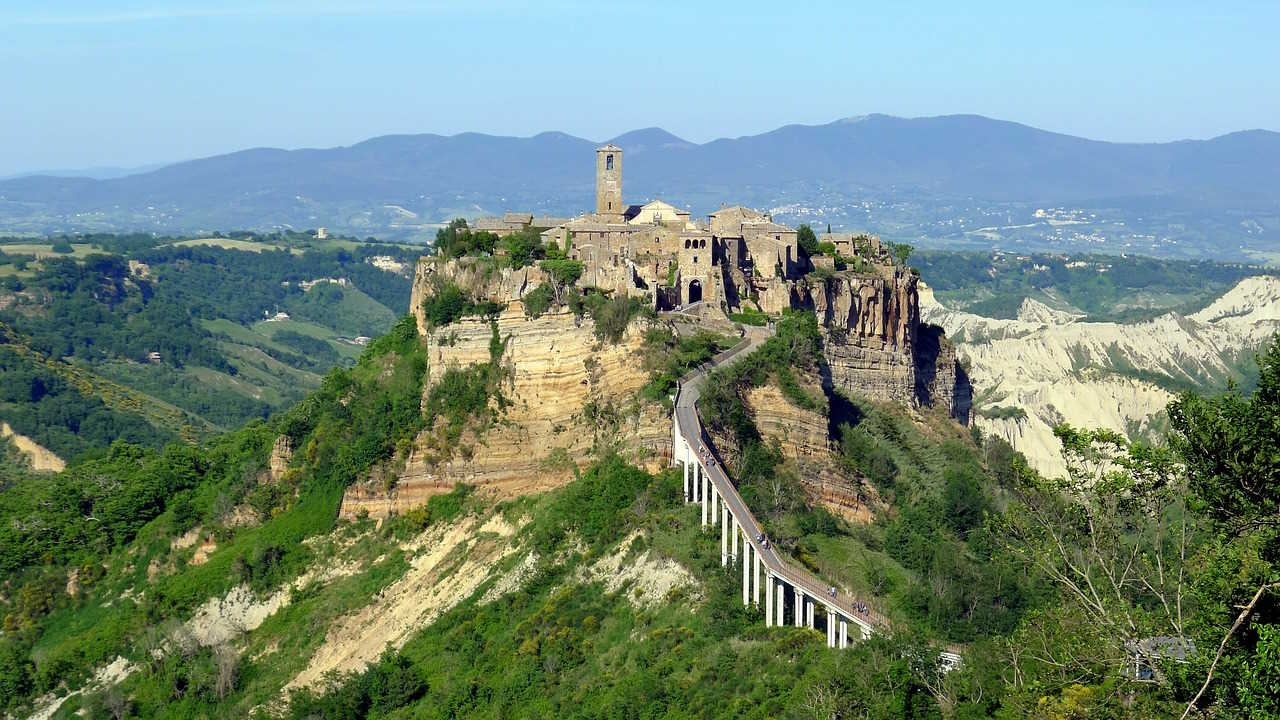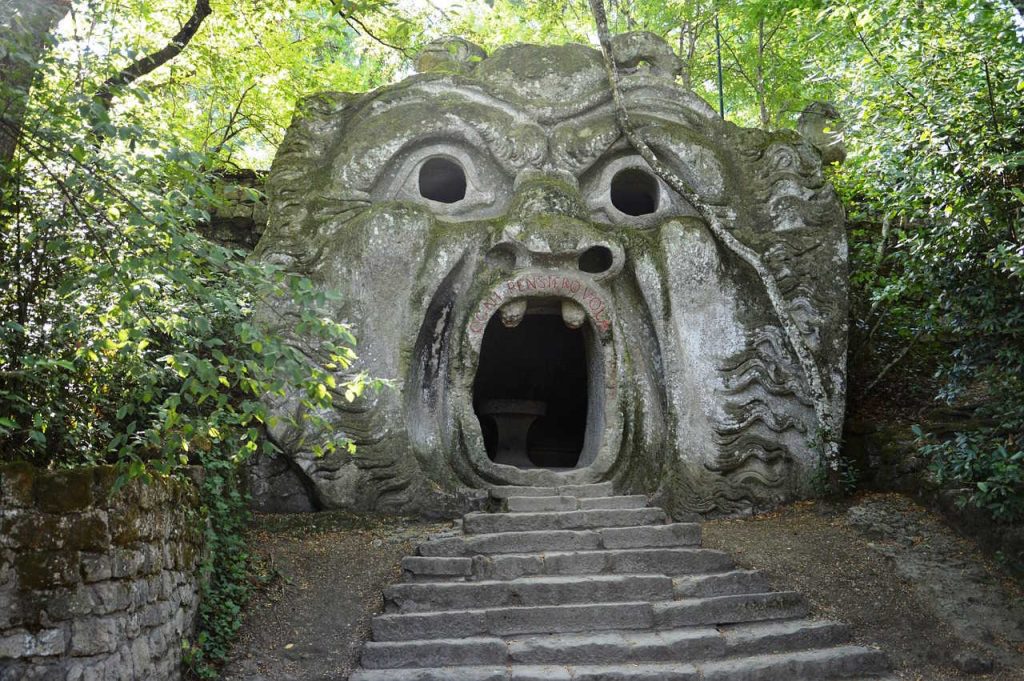Italia es un país rico en tesoros escondidos y destinos fascinantes, donde la historia, el arte y la belleza natural se combinan en una experiencia inolvidable. Entre las gemas menos conocidas pero igualmente fascinantes, destacan Civita di Bagnoregio, Caprarola y Bomarzo. Descubramos qué hace que estos lugares sean tan especiales.
Among the most impressive examples of the relentless work of nature, Civita di Bagnoregio is a suspended island connected to the world by a small pedestrian bridge.
Bagnoregio is located halfway between Orvieto and Lake Bolsena.
The ancient Bagnorea, now Bagnoregio, birthplace of Saint Bonaventure, was once connected to Civita by a strip of land that, despite earthquakes and devastation, still preserves the Romanesque-Gothic church of Sant’Agostino, the cathedral of San Nicola with a sixteenth-century bell tower and the interesting Palazzo Comunale.
A place of great suggestion and fascination, also thanks to the abandoned medieval and Renaissance buildings, mostly in ruins, among which unexpected traces of life appear, with restored doors and windows, courtyards decorated with flowers, and archaeological remains of the past life of the village. Like the silent square of San Domenico, dating back to the eleventh century, which houses a wooden crucifix of Donatello school, or the Marzocchi-Alemanni palace; but it’s the extreme limit of the village, where the boundaries of the village arrive, that deserves a visit in these places. The view is that of a lunar landscape, created over the centuries by erosion of water, a spectacle to be enjoyed at its best if you are lucky enough to coincide with a sunset.
A walk along the small streets of Civita allows you to discover small and charming local craft shops, but above all, local wine and oil shops, oil that can be tasted on the spot with tastings of bruschetta.
A curiosity: in Civita, the film was shot in which Alberto Sordi was a country priest who drove around with a moschito (the connecting bridge with Bagnoregio that is seen in the film has collapsed and no longer exists).

Siguiendo la costa del lago de Vico, entre hermosos paisajes naturales en cualquier época del año, se llega al antiguo pueblo de Caprarola, a 15 kilómetros de Viterbo, hogar del famoso Palacio Farnesio. Construido según los diseños de Vignola a finales del siglo XVI por orden del cardenal Alessandro Farnese, es una de las mejores creaciones arquitectónicas del Renacimiento tardío. Los frescos de las salas interiores constituyen el monumento más grande de la pintura en Italia entre los setenta y los ochenta años del siglo XVI. Destacan la escalera de caracol que conduce a la planta noble, una obra maestra de Vignola, y las salas decoradas por los hermanos Zuccari, incluyendo las salas de Fasti Farnesiani y del Concilio de Trento. El parque-jardín, que solo se puede visitar en ciertos momentos del año, con fuentes monumentales y estructuras arquitectónicas diversas, termina en un elegante edificio rodeado por un piso con 28 cariátides y una gigantesca fuente.

Bomarzo es una pequeña ciudad muy cerca de la frontera entre Lacio y Umbría, famosa en todo el mundo por el sugestivo Parque de los Monstruos, creación original realizada a fines del siglo XVI por Pierfrancesco Orsini, llamado Vicino. En el parque se encuentran enormes esculturas, horripilantes y grotescas, que confirman la pasión del autor por expresiones artísticas de diferentes orígenes.
En la ciudad, alrededor del Palacio Orsini, se desarrolla una serie de pequeñas calles y casas características con arcos y escaleras exteriores, un juego sugerente de luces y sombras.
El Palacio, sede del Ayuntamiento, fue renovado en el siglo XVI por Vicino Orsini. Destacable en la planta noble la sala del Consejo con frescos del siglo XVII.
